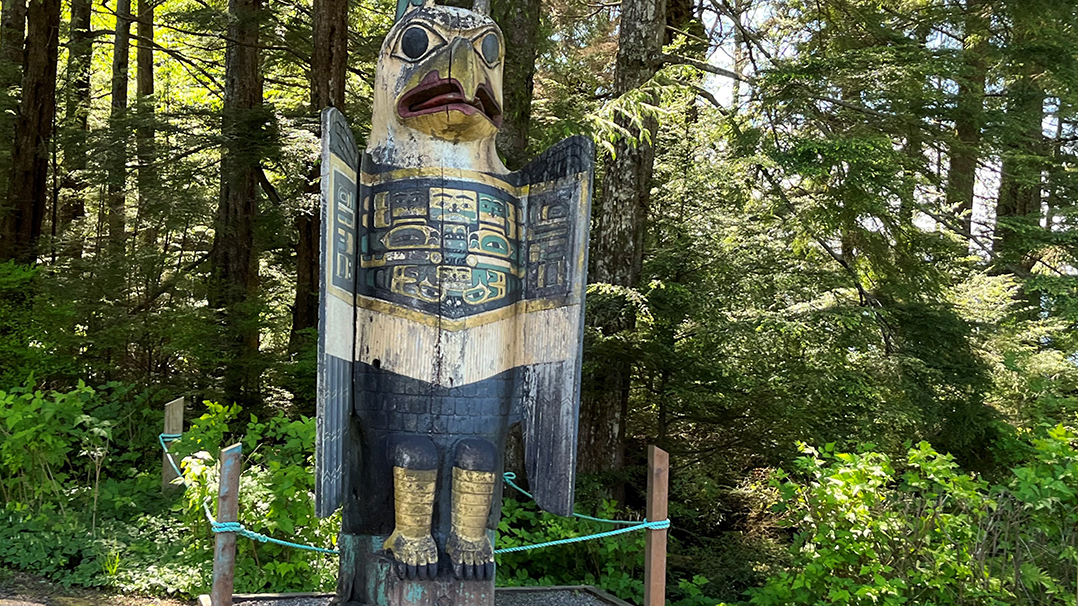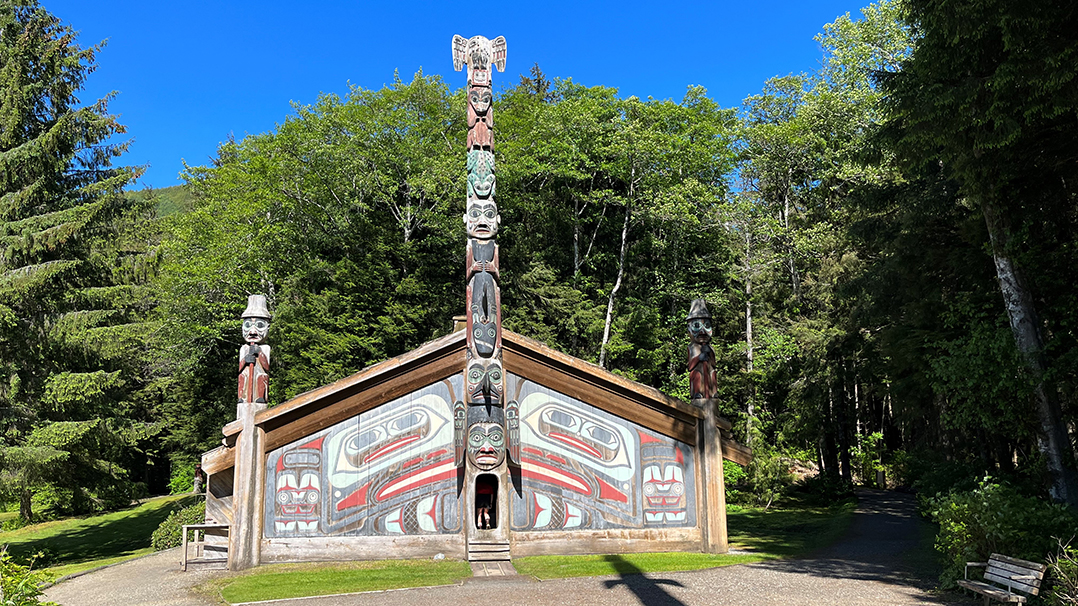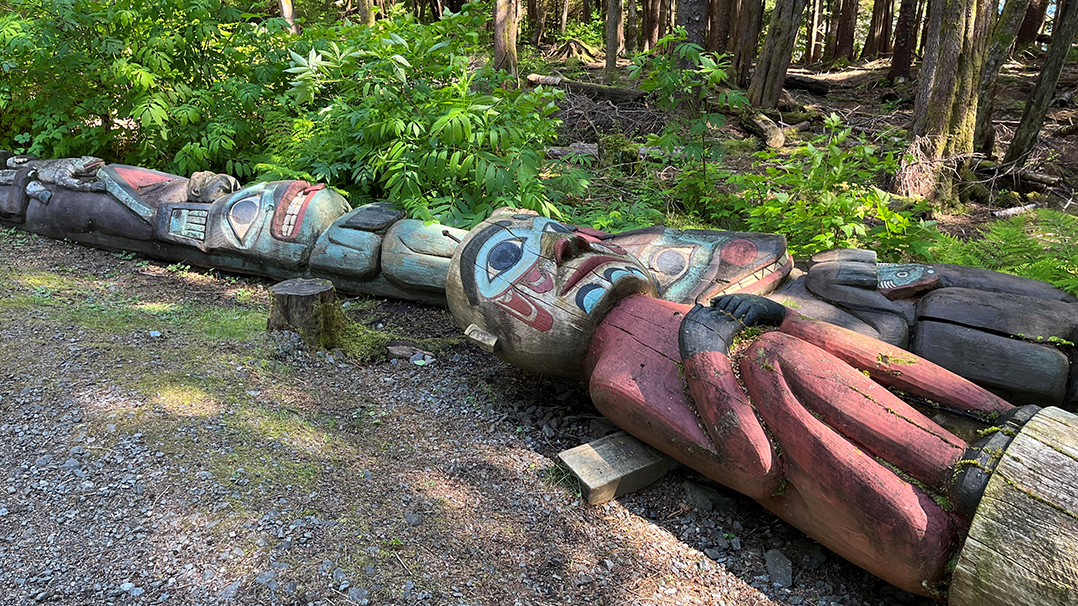Today, as we end our tour of Alaska, we travel outside Ketchikan, learning about totem poles and the indigenous people who once lived there.
The areas around Ketchikan were originally inhabited by three Native peoples, the Tlingit, the Haida and the Tsimshian. Despite their different languages, these groups developed similar styles for their totem poles. Using symbols, often of animals and stylized humans, the poles identified a family or clan and/or memorialized events or people important to them. The poles, usually carved from red cedar, ranged in height from 10 to 60 feet. Some were placed in front of clan houses and others were used to support beams in those houses. The carving styles became more elaborate after the indigenous people began acquiring metal carving tools in the early 19th century. The poles had a life of about 100 years, after which they were allowed to return naturally to the earth.
By the early 20th century, with the dispersal of the Native people, fewer totem poles replaced the ones that had fallen. In the 1930s, the Civilian Conservation Corps, hiring Native carvers, began restoring and reconstructing deteriorated totem poles recovered from deserted villages near Ketchikan.
Today, the Ketchikan area includes more standing totem poles than any other place in the world. The 8-acre Totem Bight State Park, on the waterfront site of a Native campground, includes a number of the CCC’s replica poles and a recreated clan house. It also includes a facility where poles are restored or recreated. The Totem Heritage Center includes a large collection of preserved original 19th-century poles, other artifacts found in former villages and works by world-famous Tlingit carver Nathan Jackson. More poles are located in Potlach Park and Saxman Totem Park. When you visit Ketchikan, don’t miss the opportunity to explore its magnificent collection of totem poles.







